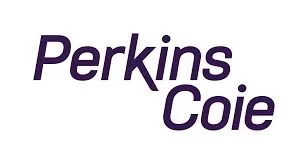- within Energy and Natural Resources topic(s)
- with Senior Company Executives and HR
- in United States
- with readers working within the Media & Information and Utilities industries
- with readers working within the Utilities industries
- within Transport topic(s)
On September 18, 2025, the Department of Energy (DOE) rolled out its new Speed to Power initiative, which seeks to meet rising energy demand trends by leveraging DOE's funding and technical assistance capabilities to accelerate the deployment of new large-scale transmission, generation, and grid infrastructure projects across the country.
To kickstart this new initiative, DOE has issued a request for information (RFI) seeking comments from state energy offices, public utility commissions, electric utilities, regional transmission organizations and independent system operators, transmission and generation developers, large energy users, and other stakeholders. The deadline for comments is 5:00 p.m. ET on November 21, 2025.1
DOE's new initiative and RFI seek to identify novel strategies to implement four Trump administration executive orders2 aimed at increasing domestic energy supply and grid reliability and removing obstacles to rapid U.S. load growth. This is especially critical in areas where rapid energy demand growth—driven by the explosion of energy-intensive data centers, artificial intelligence (AI) facilities, and emerging advanced manufacturing—is outstripping grid and generation capacity. In July DOE published a resource adequacy report, "Evaluating the Reliability and Security of the United States Electric Grid," which identified that planned facility retirements, absent adequate replacement capacity to meet rising demand, could increase the risk of blackouts one hundredfold by 2030.
To address these nationwide risks with urgency and focus on regions where need is greatest, DOE hopes to leverage existing programs, including grant programs like the Transmission Facilitation Program3 and the Grid Resilience and Innovation Partnerships (GRIP) Program4 as well as loans and loan guarantees for transmission and generation through DOE's Loan Programs Office (LPO). DOE is also interested in providing technical assistance, such as access to advanced modeling and analytical capabilities through DOE's National Laboratories, to help stakeholders evaluate challenges to infrastructure investment.
In particular, DOE is interested in advancing large-scale projects (or portfolios of smaller projects) that enable and support incremental load enhancement of 3 to 20 gigawatts (GW). This includes new interregional transmission of at least 1,000 megavolt-amperes (MVA) and upgraded existing transmission of at least 500 MVA to support additional load coming onto the grid as well as new generation assets and revived conventional energy projects that have recently retired or otherwise plan to go offline in the coming years. To achieve this, DOE is soliciting feedback from stakeholders regarding specific generation and transmission projects that could help it meet its objectives: high-priority geographic regions in which to focus its investments; novel ideas for use of DOE's legal, technical, and funding assistance to drive rapid growth; and load growth trends, particularly with respect to emerging demand for AI, data centers, manufacturing, and grid infrastructure challenges and constraints.5
Note that this RFI constitutes preliminary fact gathering by DOE and will not result in any immediate project funding or support. After assessing feedback, DOE is likely to issue one or more notices of funding opportunities (NOFOs) further advancing the administration's energy objectives. Although DOE has requested that commenters identify potential projects and challenge areas with specificity and supporting data, DOE also notes that comments should avoid commercially sensitive or confidential business information.6
Takeaways and Potential Opportunities and Challenges
For large-scale transmission projects, the Speed to Power initiative represents an opportunity to explore new and creative ways to secure funding, including potential collaborative partnerships with DOE, as well as potential pathways to accelerated infrastructure buildout. This opportunity may be particularly of interest for interregional transmission developers, as interregional transmission projects face significant challenges in disjointed transmission planning processes despite the significant efficiency and reliability value they can offer. In particular, opportunities to leverage DOE as an anchor-tenant to procure capacity on proposed interregional lines before large loads or resources serving them are prepared to make a capacity commitment may help get such projects financed and off the ground.
Only the largest generation assets will be able to meet DOE's 3 GW minimum, but portfolios of new and revived generation assets could also be clear beneficiaries, especially where new generation is sited in areas of rapid data center demand growth. Regions where demand is particularly acute can be found using a tool created by the National Renewable Energy Laboratory (NREL) that shows particular need in Texas, the greater Washington, D.C., area, and other less obvious markets like Reno, Nevada.
DOE's materials make no reference to renewable energy, consistent with the Trump administration's position on utility-scale wind and solar energy. Other forms of nonfossil generation are poised to benefit, such as nuclear (both new and previously decommissioned projects specifically called out in the RFI) and geothermal energy, both of which have been prioritized by the administration. Battery storage projects and regional transmission that may provide benefits to renewable and intermittent generation sources could still be beneficiaries, but such projects will need to think carefully about how they present themselves to DOE in order to fit within the department's current operating mandate. In addition, transmission and grid upgrades emerging out of California's recent passage of AB 825, which moves toward a region-wide electricity market supporting grid stability and resilience across the western United States, could be good candidates for future Speed to Power opportunities.
Footnotes
1 Responses must be submitted electronically to SpeedtoPowerRFI@hq.doe.gov with the subject line: "RFI Response – Accelerating Speed to Power."
2 Exec. Order 14154: Unleashing American Energy (Jan. 20, 2025); Exec. Order 14179: Removing Barriers to American Leadership in Artificial Intelligence (Jan. 23, 2025); Exec. Order 14262: Strengthening the Reliability and Security of the United States Electric Grid (April 8, 2025); and Exec. Order 14302: Reinvigorating America's Nuclear Industrial Base (May 23, 2025).
3 Authorized by 42 U.S.C. 18713 and administered by the Grid Deployment Office, this $2.5 billion program allows DOE to issue grants to support buildout of interregional transmission lines and to de-risk large-scale transmission projects by serving as an "anchor customer" and entering into capacity contracts for new, upgraded, or expanded transmission lines.
4 Authorized by 42 U.S.C. 17386,18711, and 18712, GRIP is a $10.5 billion program designed to improve grid reliability and resilience through funding for projects including substation upgrades, grid hardening, advanced control systems, and innovative approaches to enhance reliability and improve transmission, storage, and other regional energy infrastructure.
5 The RFI solicits information on whether one of the primary barriers to expanding infrastructure and deploying large-scale generation and transmission projects is siting and permitting. How to solve this challenge remains top of mind for both the administration and Congress. On September 17, 2025, the congressional Problem Solvers Caucus announced its endorsement of a bipartisan permitting reform framework as momentum builds for Congress to act on permitting reform. The recommendations in this framework offer a bipartisan roadmap to streamline the permitting process, boost energy production of all kinds, and give investors clarity and confidence. This framework was developed by the Problem Solvers Caucus Permitting, Energy & Environment Working Group, led by Reps. Scott Peters (CA-50) and Gabe Evans (CO-08), along with Co-Chairs Reps. Brian Fitzpatrick (PA-01) and Tom Suozzi (NY-03). See PERMITTING REFORM FRAMEWORK, https://problemsolverscaucus.house.gov/sites/evo-subsites/problemsolverscaucus.house.gov/files/evo-media-document/problem-solvers-caucus-permitting-reform-framework.pdf
6 If commenters do choose to include sensitive or confidential information, they must note with specificity which pages require confidential treatment, including on a cover page, in the header and footer of each sensitive page, and in line-by-line highlighting of proprietary information.
The content of this article is intended to provide a general guide to the subject matter. Specialist advice should be sought about your specific circumstances.





